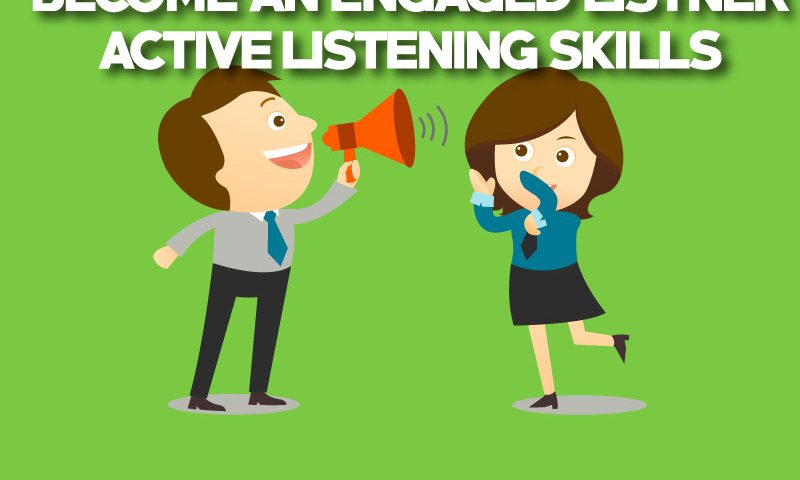You should want to fully understand and connect with other people. If this is the case then listening in an engaged way will come naturally to you and you already possess active listening skills.
If you struggle with this, try the following tips. The more you practice, the more satisfying your interactions with others will become and you will be able to master the active listening skills. You may also want to visit our ultimate guide to effective communication skills to build your ability to communicate more effectively if you are already not coming from the provided link.
Steps to Active Listening Skills
• Focus on the speaker
This means not only words but also overall body language, tone of voice and other nonverbal cues. The tone of voice will convey the speakers intention. You need to adequately focus on the speaker, checking text messages or doodling out of boredom you will definitely miss the nonverbal cues and the emotional content behind the words.
Have you ever noticed that when you are busy on a phone call you do are not aware on what is running on the television. Just when you finish and focus you get the entire sound and context of what is running on the TV. Yes focus is very important to understand the context. One caution though, do not get so engrossed in focusing that you start missing external clues.
If you find it difficult to concentrate on certain topics, try repeating the speakers words in your head. This will reinforce their message and help you stay focused on them.
• Favor your right ear
The left side of our brains contain the primary processing centers for both speech comprehension and emotions. Favoring your right ear can help you detect the emotional nuances better since the left side of the brain is connected to the right side of the body.
In order to do this, keep your posture straight, your chin a little lower than you might usually hold it and tilt your right ear toward the speaker. This will help you to pick up the emotional content of the speakers words and build on your active listening skills.
• Avoid interrupting or redirecting
This may seem like common sense but it is more than simply cutting into something the other person is saying. Listening is not the same as simply waiting for your turn to speak.
You aren’t going to be able to concentrate on what is being said if you are thinking about what you will be saying next. Many times the other person will read your facial expressions and know that you are thinking about something else.
• Show your interest
You can do this by smiling at the speaker, nod once in a while and by making sure that your posture is open and inviting. You want to encourage the other person to continue with short comments like ‘yes’ or ‘uh huh’.
However, be aware that this can easily backfire if you are not careful. Do you remember what was said earlier about not being able to listen if you are multitasking? For example, you are sitting on the couch at home watching your favorite TV show or sports team and your spouse or child comes to speak to you.
For the first few moments of the conversation, you manage to focus on the discussion but something happens on the TV that pulls your attention away from the one talking to you. The next thing you know your spouse is storming out angrily or you find that you have agreed to something because your kid took advantage of your distraction.
• Set aside personal judgment
To communicate effectively doesn’t mean you have to like other people or agree with their ideas. However, you do need to put your personal judgment aside and withhold criticism on their values or opinions in order to fully understand a person.
Once you are able to do this, you will find that can lead to a profound connection with other people.
• Provide feedback
If you find that you are not comprehending exactly what the other person is saying, you can ask for clarification by reflecting a paraphrase of what you did understand.
You can do this by beginning your reflection with “What I’m hearing is …” or “Sounds like you are saying …”. If you simply repeat what the speaker has said exactly, you will sound unintelligent or insincere. You want to express what the other person’s words meant to you.
Another good way to request clarification on certain points is to ask “What do you mean when you say …” or “Is this what you mean?”
Final Words
You can improve your listening abilities by increasing the muscle tone of the muscles of the middle ear as well. This will allow you to detect the higher frequencies that occur in human speech which are where you will hear the emotional message being offered.
Focusing your attention on what someone is saying is good exercise for those tiny muscles. However, singing, playing a wind instrument like the flute, clarinet or oboe, and listening to high-frequency classical music with violins rather than the low-frequency rock or rap music are also good exercises for the muscles of the inner ear.

